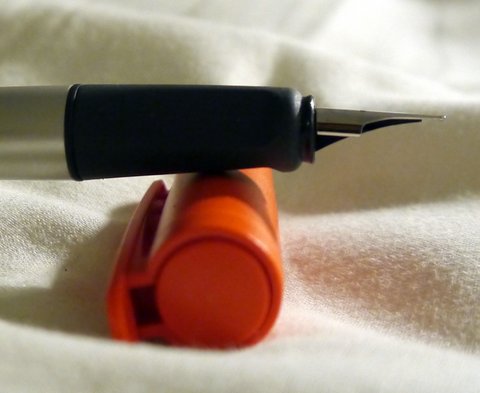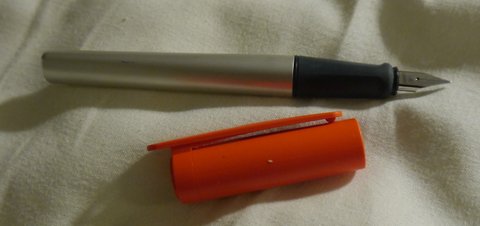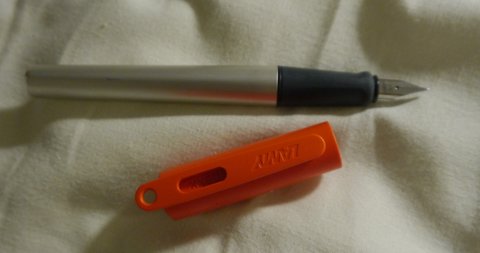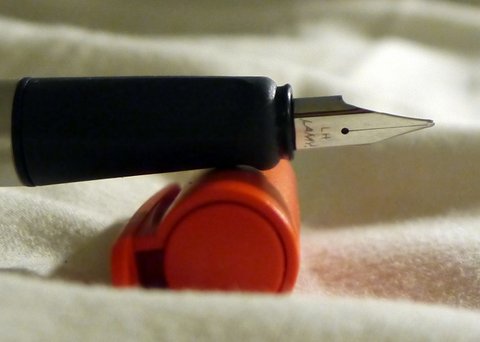Visit Fountain Pen Network or a host of other fountain pen
related websites and you'll see a host of reviews. Many of these break things
down into various categories and then offer scores for each. One of these
categories is, invariably, the filling system of the pen. This perhaps made
sense some time in the distant past when a bevy of different filling systems,
sometimes of wildly differing reliability, dotted the landscape. But those days
are long gone. Among new pens, Roughly 95%, or perhaps even more, filling
systems are cartridge/converter with the remaining 4% piston and a holdout few
throwbacks like aerometric or lever filler. Yet this category remains
obligatory, bizarrely being granted equal weight with things like writing
quality.
Despite having decisively won the battle of the filling systems,
cartridge/converters are often viewed with scorn, seen as decidedly second rate
compared to pistons. This, to my mind, represents the steampunk sensibilities
of those of us enamored of these objects. We like the 19th century clockwork of
the screw gear and having a (relatively) hefty knob to turn to fill our pens.
We like the decidedly unwelcoming (at least for newcomers) requirement to fill
from a bottle, possibly dirtying our hands and much else besides. Cartridges,
despite their portability, cleanliness, and ease, are to be scorned. The piston
and the bottle are king. At least for westerners.
It is curious how cultural filling systems seem to be. The
apparently ever-practical Japanese recognize sense when they see it (at least
in this area), and are c/c fillers, even for the most expensive pens.
The Germans, masters of finely machined parts to infinitesimal
tolerances, still favor pistons on more expensive entries, but economize lower
down. This, however, seems to be changing. The Pelikan 200, most people's first
encounter with the piston, now offers c/c as an option. Montblanc seems to be
heading more and more in this direction as well.
Like much of the rest of Italy, there is a sharp divide between north,
where pistons still hold some sway thanks to Aurora, and south, solid c/c
territory. This division between the Teutonic and Mediterranean cultures spills
over into France, solid c/c territory, even for top of the line pens like the
Edson.
China, that vast factory of a country, seems divided between c/c
and, bizarrely, aerometric. The latter seems an artifact of companies like
Hero, where time has mostly stood still since the Communists took over in 1948.
They happily churn out Parker 51 clones of varying quality using the same,
state of the art in the 1950s technology, that vaulted Parker to the very
pinnacle of pendom. Companies with newer plant seem to have gotten the memo
about the virtues of c/c.
Even though filling systems have mainly converged on a single
solution, they have not managed to converge on a single standard, nor will
they, I think. The c/c solution won the day not just because it is
technologically superior, but also because of its business potential. The
claims of pen manufacturers not withstanding, any fountain pen ink will work in
any pen. Waterman ink works perfectly well in Pelikans and vice-versa. But this
is not the case with cartridges. A Sheaffer cartridge is entirely useless in a
Lamy.
The simple, humble cartridge is the 1960s antecedent to its more
modern cousins sharing the name---inkjet cartridges and, even more recently,
coffee cartridges. The idea is simple yet powerful. Once the consumer buys the
durable product, the pen in this case, she is locked into buying branded
cartridges for all eternity. Thus, the knockdown price of the Sheaffer No
Nonsense pens offered in nearly every drugstore in the 1970s represented a
gateway into the consumer's wallet via the odd shaped Sheaffer cartridges. The
now ubiquitous Lamy Safari is the 2010s equivalent. At $35 or thereabouts, the
Safari offers an exceptional deal. At $5 a pack, the ink does not. Such a
strategy works, of course, only if you have a popular entry level pen to sell
in volume. It's a nonsense if the products on offer are niche items.
This is reflected, somewhat, in the marketplace. A number of
companies sell items that accommodate international sized cartridges, as close
to a standard as there is likely to be. But these are not the companies whose
bread and butter are "cheap and cheerful" pens for the masses.
Consider a partial list of the two sides, proprietary and international:
Proprietary: Parker, Sheaffer, Cross, Lamy, Platinum
International: Waterman, Faber-Castell, Caran d'Ache, Pelikan
The outlier on the list is Pelikan. We they are mostly associated
with high end products in the US, their place in the German market is entirely
different. They still offer high end products there, but also do a lively
school pen business. Indeed, some of my favorite knockabout pens are Pelikan
school pens. For instance, the Pelikano is simply an outstanding pen, at least
as good as the Safari, though far less well known. Why in heavens did Pelikan
not adopt a proprietary strategy?
As a bottle user, the strategy utterly fails on me. Instead, it's
simply annoying to have to buy a zillion different types of converters to fit
pens that do not provide these. (Another clever, cost-effective and somewhat
evil strategy to encourage customers to give up the bottle.)
To conclude my rant, let me make two points. First, it is silly
to review a pen's filling system and use this as a basis for anything. If you
abhor filling from a bottle, avoid pistons. Otherwise, it hardly matters.
Second, if you are a slave to cartridges, you might want to reconsider. Not
only do you get a lot more pretty colors from bottles, you save yourself from
becoming Lamy's, or someone else's milk cow.






